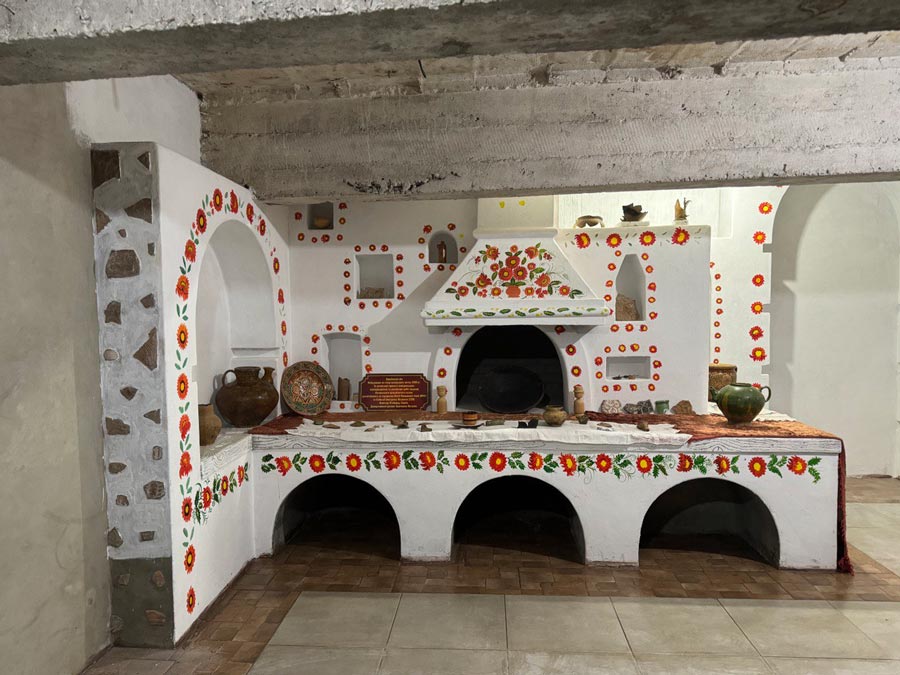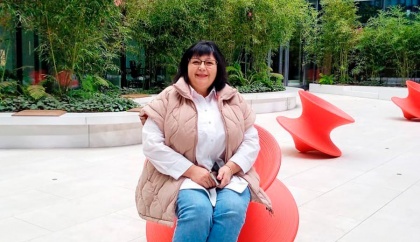
The film club at the Okhtyrka City Museum of Local Lore helps museum workers interact with the locals, bringing them together for documentary films.
Reprinted from the Sheriffs for New Communities Information Platform.
On February 24, 2022, Lyudmyla Mishchenko, director of the Okhtyrka City Museum of Local Lore, went to work to the sound of shelling. Okhtyrka, a city 40 kilometers from the Russian border, was being shelled by enemy artillery and aircraft. By 10 AM, enemy tanks were already moving through the city. Lyudmyla Mishchenko and her colleagues continued to work throughout the most difficult days of the outbreak of full-scale war, rescuing and removing exhibits, equipment, and museum funds, and covering the windows and doors of the museum that had been smashed during the shelling with construction materials. “I was afraid to hear that the museum is no more,” the director recalls. “My friend called me and told me a Russian bomb had hit the city council, and its building was right across from our museum. I realized that my windows were gone. We had replaced the windows in two halls of the museum just before the war, installing beautiful, solid arched windows and replacing the entrance doors. Everything looked so beautiful: one would grab the door handle and immediately realize that it’s a museum. Now, there were no windows, the doors were broken, and even the metal door to the storage room was twisted. I didn't know what to do.”
The Okhtyrka City Museum of Local Lore, beginning of March 2022 Lyudmyla says that her first reaction was the urge to scream.Then, she gathered pieces of plastic and drywall to close the gaps and started looking for helpers. By that time, some of the museum staff had already left the city, Okhtyrka was deserted, and there were no building materials, as the Russians had bombed construction stores and bases. The museum had to be saved. The five employees who remained in the city called their friends and relatives, and the Ministry of Emergency Situations came to their aid as well. On March 9, the rescue of the museum began. Lyudmyla Mishchenko was looking for safe places to move the museum's collections. Some of the rescued items were hidden in the church, others were taken out of town. They acted at their own risk. The director recalls that, after the liberation of the Sumy region from the enemy, the Ukrainian military who learned about this operation of saving the museum, were surprised at the audacity of her actions. At that moment, all decisions had to be taken immediately. From March 9 to April 26, the museum workers, together with the residents of Okhtyrka, dismantled the rubble of the museum while rescuing the exhibits. Lyudmyla Mishchenko recounts these weeks: “It was very hard, physically hard. The building of our museum is old, it was built in 1903-1905. The centuries-old plaster crumbled from the shelling, and it is heavy. Of course, we were tired. We waited out the air raid sirens in the basement. But we managed to do it together. Now, when I recall those days, I think we did everything right.”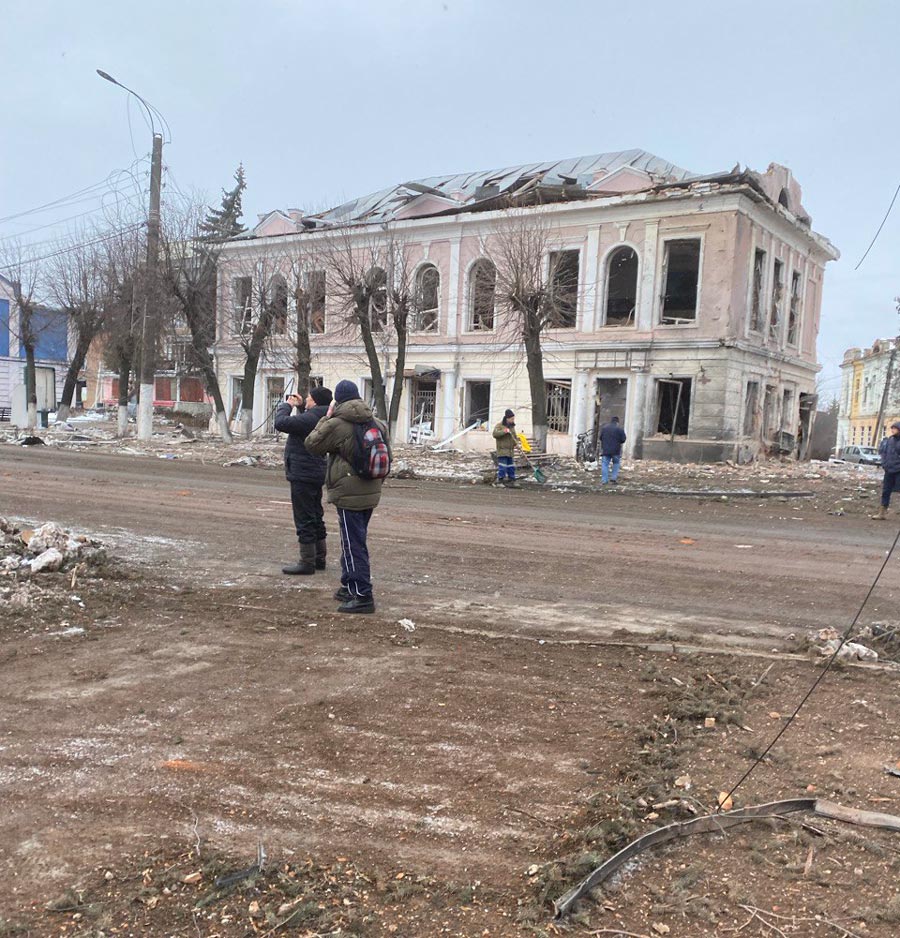
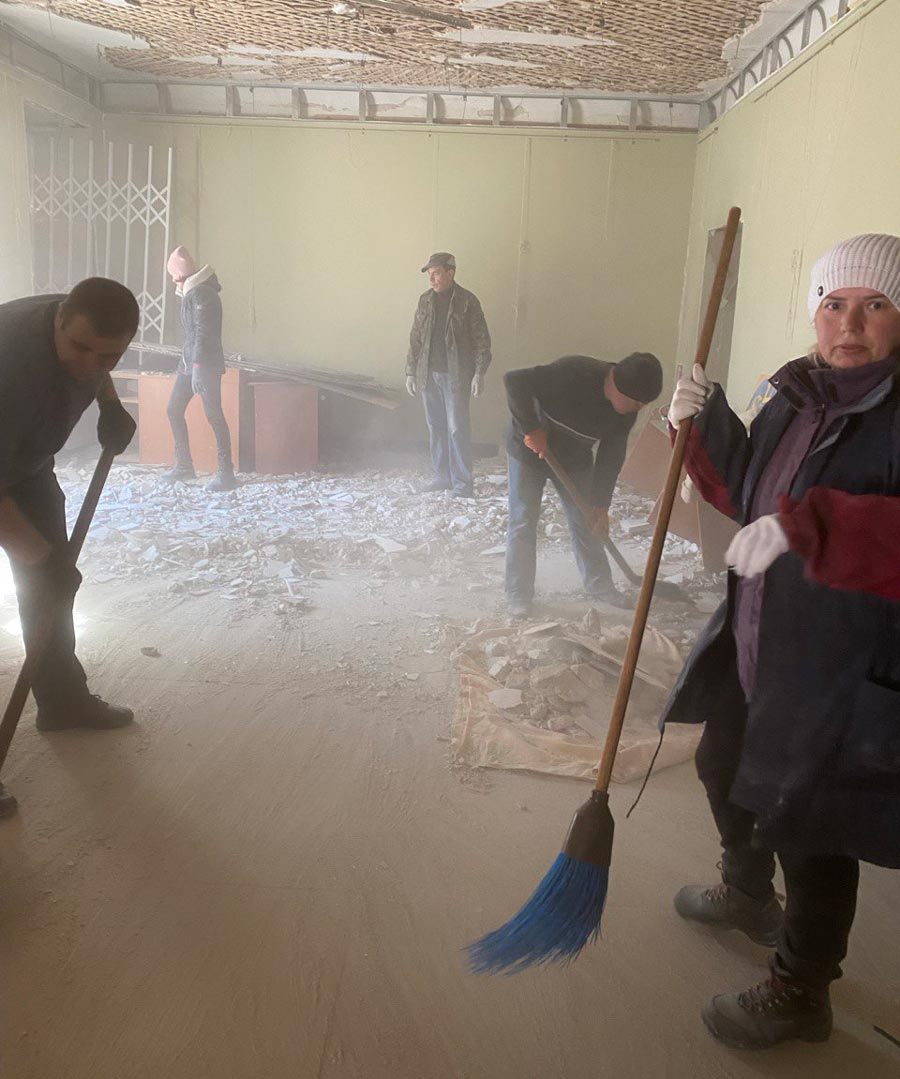
The museum halls after shelling Photo Today, the Okhtyrka City Museum of Local Lore is going through difficult times. It is not open for visitors, and its expositions and exhibitions are curtailed. The building in the city center has been conserved, and the collections and staff have been temporarily relocated to the premises of a former women's clinic. This space is not at all suitable for storing museum collections. The team brought it back to life on their own, washing and cleaning everything. The Red Cross and the Center for the Rescue of Cultural Heritage helped with heaters and dehumidifiers. This is how they managed to “warm” the collection and maintain the temperature in the room. Lyudmyla Mishchenko tells about the current museum routine: “The events we hold these days are very small in terms of the number of people present, because we have no bomb shelter. But we take the paintings outside to let them see the light. The colors fade and the brightness is lost when they are constantly in a dark room. Our paintings can ‘breathe,’ and we sit in a closed room. This is our life now. It's sad, of course, but these are the conditions now.”
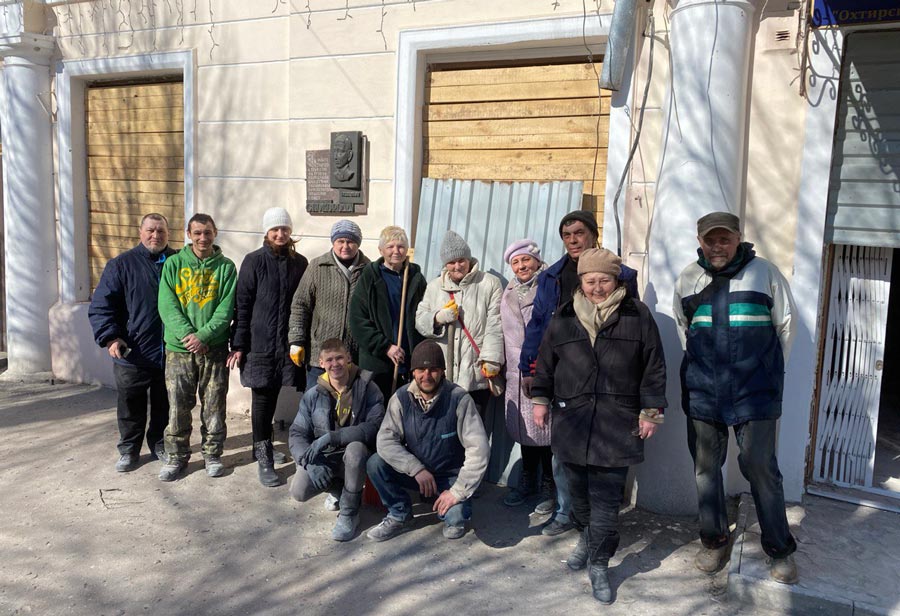
The museum director and volunteers after cleaning
However, the museum director does not give up. Despite all the difficulties of the wartime, she is looking for ways to keep the institution active: “Before the war, it was so delightful to see the active life in the museum! Our events brought the whole community together. Parents would bring their children, folk artists would conduct workshops, scientists would come from Kharkiv to give lectures - it was wonderful. We really appreciate the audience we have engaged over the years, because it was not easy to make our community fall in love with us, either.” Retaining the audience is one of the biggest challenges for the museum staff. Lyudmyla Mishchenko is constantly looking for new ways to keep in touch with visitors and spark their interest. When she found out that the DOCU/CLUB Network offered an opportunity to open a documentary film club at the museum, she immediately applied. She became a participant of the DOCU ACTS 2.0 program, went through training, and started to organize screenings at the museum's film club. “I understood that we had to look for something new, be attractive to the community, keep a high quality brand, so that people would want to come to us, open their hearts, and realize that there is a museum in the city,” says the director. “We discussed and thought it through with the staff. I am very pleased with the result. It is extremely interesting to work on this project.”
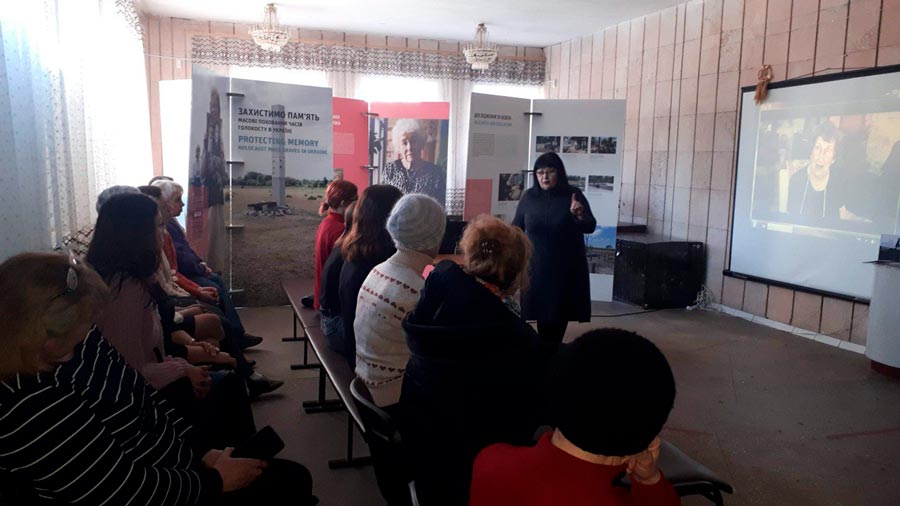
Docudays UA Film Club meeting Lyudmyla Mishchenko, who has also become a moderator of the Docudays UA film club, prepares mini-exhibitions from the museum's collections for each screening. For example, after watching “And Every River” by Olesya Morgunets-Isaenko, the audience looked at stuffed birds from the Sumy region and discussed the consequences of pollution of the Vorskla River for the local ecosystem. The film “Language” by Serhiy Lysenko provoked heated discussions among the audience. After all, in Soviet times, Okhtyrka was a city of oil workers and military staff. Many Russian-speaking people live here to this day, and before the full-scale invasion, many of them wouldn’t support the idea of Ukrainization. “Broken Branches” and “Silence,” two films about the Holocaust tragedy, helped establish heartfelt communication with the city's Jewish community: the museum even received family heirlooms as a gift from the audience. Lyudmyla Mishchenko says that, even during the full-scale war, she was able to diversify the museum's activities with help of film screenings: she planned a series of screenings at a local school, attracted talented young people from the Small Academy of Sciences, and teamed up with the “Sokil” creative center to organize film screenings and book presentations together. So why has the museum's film club become so popular in just one year? The moderator is convinced that documentary films help people expand their horizons of understanding the world and themselves, encouraging them to think about what they can change in their lives. “You know, I really like discussing films, because I’m interested in people's opinions,” says Lyudmyla Mishchenko. “The audience gets excited and emotional after the screenings, recalling events and family stories from their lives. And we, the museum workers, need this to get information about life in a particular period.”
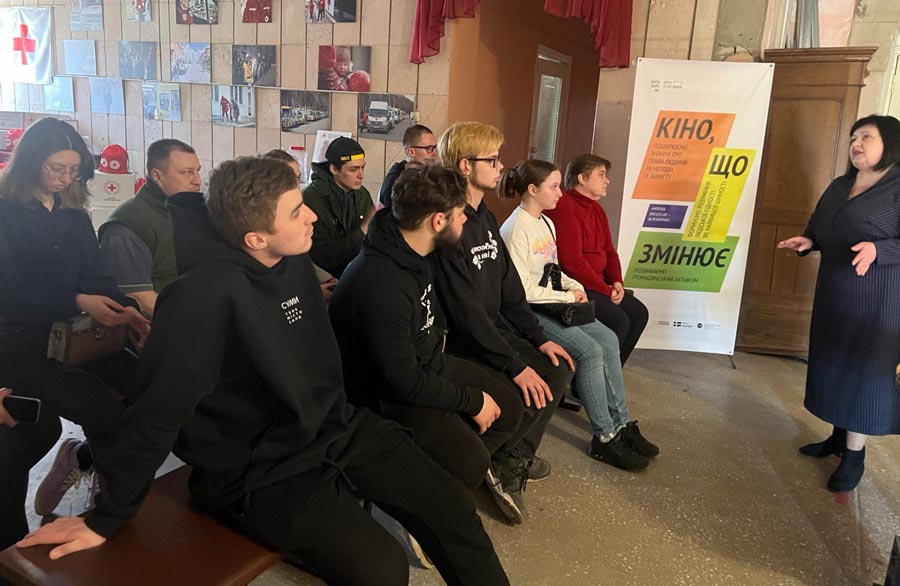
Film screening for young activists of the city It is also valuable that, during the discussions, the audience can learn important information about human rights and learn how to protect them. Experts from the Free Legal Aid Center, human rights activists, and scholars often join the discussions. The film club opens new opportunities for people and gives them an impetus to start changing their lives. Lyudmyla Mishchenko admits that it is not always easy to establish contact with the audience and start a conversation. One of the most difficult audiences for her is the clients of the local probation center. These are mostly young people who come to the screenings with distrust and prejudice. “I remember one boy who came with his grandmother, who was his custodian. He was so nervous and aggressive, refusing to watch the film. I sat down next to him and hugged him to calm him down. And then he started talking, sharing his thoughts. I say to such viewers every time: ‘I still believe that you will become different. Don't think that this problem is unique to you. The characters in the film also had a hard time, but they found courage in themselves and changed. And I wish you the same.’ Rather than saying general phrases, I look for ways to get the negative out of their souls in order to change their perception of life and attitude,” the moderator shares her experience. Of course, she would like to expand this activity to the fullest, openly announcing meetings at the film club, but during martial law it is impossible. However, Lyudmyla Mishchenko has another innovative idea. With the grant support of the World Monuments Fund (WMF) and Cultural Emergency Response (CER), an art space is being set up in the basement of the museum. The museum's director was looking for ways to return to her cherished premises and remembered about the basement of the old house. The museum staff decided to deepen it and began to remove the soil. During these works, one of the construction workers literally fell underground. The work was suspended, and archaeologists from Sumy and Kyiv were invited to the museum. During the excavations, the scientists came across the settlement of Cossack chieftains. They found the remains of a stove, stove tiles, dishes, and even an inkwell in excellent condition, as if it had been covered with earth a week ago. Reconstructed Cossack stove in the Art Space Lyudmyla Mishchenko requested grant support to help revive this Cossack stove, turn it into a museum showcase and make it part of the art space. The director has big plans for the space: “This is a safe haven. I have already calculated the costs of Internet connection. I will start looking for a grant for multimedia equipment, so that we can organize our events, hold film screenings, and invite the audience. It is my dream for the museum to finally return to full-fledged life.” According to her, the challenges the museum and its staff have to overcome harden them. For these people, the museum is their life, so they find opportunities to work under any conditions, feeling that the city needs them. The development of the DOCU/CLUB Network is funded by the United States Agency for International Development (USAID), the Embassy of Sweden in Ukraine, the National Endowment for Democracy (NED) and Fondation de France. The opinions, conclusions, or recommendations are those of the authors and compilers of this publication and do not necessarily reflect the views of the governments or charitable organizations of these countries. The authors and compilers are solely responsible for the content of this publication.
